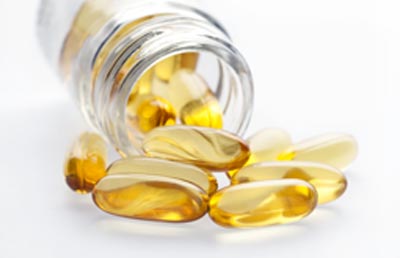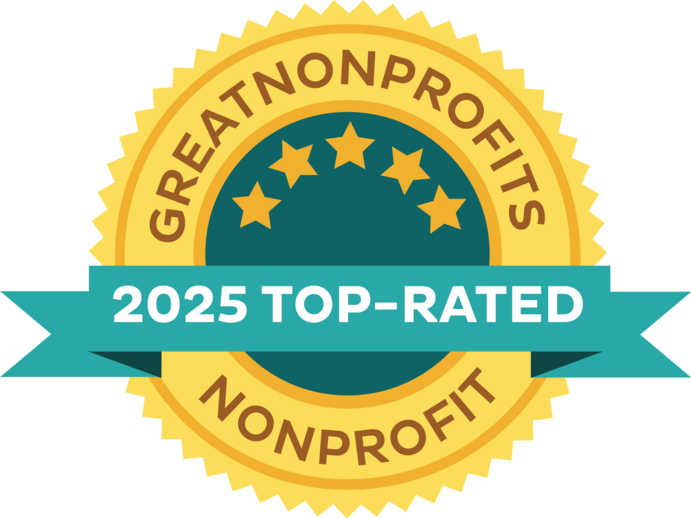You need sun protection as much as you need vitamin D. You can have both, without skin damage or nutritional deficiency. A dermatologist tells you how.
By ANNE MARIE MCNEILL, MD, PHD, and ERIN WESNER
We all need vitamin D. It spurs bone growth, and without it we’d be at high risk of conditions such as osteoporosis. Vitamin D also gives an important boost to the immune system, and some in the medical community believe it can help stave off any number of diseases, while a D deficiency can open a Pandora’s box of ailments.
When your skin is exposed to sunlight, it manufactures vitamin D. The sun’s ultraviolet B (UVB) rays interact with a protein called 7-DHC in the skin, converting it into vitamin D3, the active form of vitamin D.
The problem is, too many people think that using sunscreen and other forms of sun protection leads to vitamin D deficiency, and that the best way to obtain enough of the vitamin is through unprotected sun exposure. But that can lead to a whole other set of serious problems. As a dermatologist and member of The Skin Cancer Foundation, I want to explain why, when you add up the pros and cons, letting the sun beat down on your face and body is not the way to satisfy your D quotient. Let me show you how you can have your D and literally eat it too, without abusing the skin you’re in.
Benefits of Vitamin D, Risks of D Deficiency
Vitamin D helps keep your bones strong by regulating calcium levels. Maintaining adequate amounts of the vitamin is essential for your bone health. People deficient in the vitamin can suffer symptoms including muscle aches, muscle weakness and bone pain. In severe cases, by reducing calcium absorption, deficiency can lead to slower growth, bone softening and weakened bone structure, increasing the risk of skeletal deformities, osteoporosis and fractures.
Studies have never found that everyday sunscreen use leads to vitamin D insufficiency. In fact, people who use sunscreen daily can maintain their vitamin D levels.
In recent years, the claims for vitamin D have gone further. Some proponents hypothesize that it does everything from decreasing cancer deaths and heart disease to inhibiting type 1 diabetes and rheumatoid arthritis. However, these suggestions are based on observational studies alone. This means the researchers have observed that people with enough vitamin D have a lower incidence of and/or deaths from these diseases, but not that vitamin D is the reason they are lower. While observational studies may be a good starting point, they are not proof or a basis for medical recommendations.
Benefits of Sun Protection, Risks of Sun Exposure
In contrast, there is good evidence for the multiple benefits of sun protection. Controlled studies have shown that regular use of an SPF 15 or higher broad-spectrum sunscreen reduces your chances of developing squamous cell carcinoma by about 40 percent, melanoma by 50 percent and premature skin aging by 24 percent.
It has been proven on the molecular level that the sun’s ultraviolet (UV) light damages the skin’s cellular DNA, creating genetic mutations that can lead to skin cancer. Both the U.S. Department of Health and Human Services and the World Health Organization have identified solar UV as a proven human carcinogen, with studies linking it to about 90 percent of nonmelanoma skin cancers and about 86 percent of melanomas, as well as premature skin aging. In addition, UV radiation harms the eyes and can cause cataracts, eyelid cancers and other ocular skin cancers, including melanomas.
In short, unprotected sun exposure puts you at risk for any number of conditions that can permanently damage your skin, disfigure you, sometimes even kill you. And the regular use of sun protection can go a long way to keep any of that from happening.
What is a Healthy Level of Vitamin D?
If you’re having blood drawn for your annual checkup, ask your doctor to test your vitamin D level. On your lab report, here’s what your number means.
Below 30: Deficient. Talk to your doctor about supplements.
30 to 50: Generally inadequate for bone and overall health.
50 and above: Adequate (but more is not necessarily better).
125 and above: Too high (may have adverse effects).
Does Sunscreen Use Lead to Vitamin D Deficiency?
High-SPF sunscreens are designed to filter out most of the sun’s UVB radiation, since UVB damage is the major cause of sunburn and can lead to skin cancers. UVB wavelengths happen to be the specific wavelengths that trigger vitamin D production in the skin. Nonetheless, clinical studies have never found that everyday sunscreen use leads to vitamin D insufficiency. In fact, the prevailing studies show that people who use sunscreen daily can maintain their vitamin D levels.
One of the explanations for this may be that no matter how much sunscreen you use or how high the SPF, some of the sun’s UV rays reach your skin. An SPF 15 sunscreen filters out 93 percent of UVB rays, SPF 30 keeps out 97 percent, and SPF 50 filters out 98 percent. This leaves anywhere from 2 to 7 percent of solar UVB reaching your skin, even with high-SPF sunscreens. And that’s if you use them perfectly.
Damage Before You Know It

The truth is, it doesn’t take much sun exposure for the body to produce vitamin D. Even committed proponents of unprotected sun exposure recommend no more than 10 to 15 minutes of exposure to arms, legs, abdomen and back, two to three times a week, followed by good sun protection. That minor amount of exposure produces all the vitamin D your body can muster. After that, your body automatically starts to dispose of vitamin D to avoid an overload of the vitamin, at which point your sun exposure is giving you nothing but sun damage without any of the presumed benefit.
The thing is, even just those unprotected 10 or 15 minutes are way more than enough time to cause DNA damage, and every bit of this damage adds up throughout your lifetime, producing more and more genetic mutations that keep increasing your lifetime risk of skin cancer. Unfortunately, the very same UVB wavelengths (290-320 nanometers, or nm) that make the body synthesize vitamin D are also the wavelengths that produce sunburn and genetic mutations that can lead to skin cancer.
And that’s not to mention the damage caused by the sun’s longer-wave UVA radiation (320-400 nm), the key UV rays behind premature skin aging as well as a cause of skin cancer. A 2015 study published in Science found that UVA damage can start in less than a minute in the sun. The damage to the skin’s pigment cells (melanocytes) actually keeps developing hours after the sun exposure ends. Melanocyte damage can lead to melanoma, the deadliest form of skin cancer.
The rapid onset of DNA damage and the harmful cumulative effects of both UVA and UVB exposure throughout our lives are the reasons that the vast majority of dermatologists recommend more sun protection, not less. The Skin Cancer Foundation’s Photobiology Committee, an independent team of experts on UV damage and sun protection, recommends daily use of not just an SPF 15+ broad-spectrum (UVA-UVB) sunscreen, but also other forms of sun protection such as shade and sun-protective clothing, including wide-brimmed hats and UV-filtering sunglasses.
The Foundation and the medical community at large also strongly caution against trying to use tanning beds as a vitamin D source, since it’s pointless as well as dangerous. “When you lie in an indoor tanning bed, you are exposed primarily to UVA,” says Deborah Sarnoff, MD, clinical professor of dermatology in the Ronald O. Perelman Department of Dermatology at NYU School of Medicine in New York City, and a senior vice president of The Skin Cancer Foundation. “But it is UVB, not UVA, that helps the skin make vitamin D, so you are increasing your risk of skin cancer without receiving any benefit!”
Better Choices
The question is, if not from UV exposure, how can you obtain enough vitamin D?
It’s pretty straightforward, actually. You can acquire vitamin D from a combination of diet and supplements. Fatty fish such as salmon, mackerel and tuna are especially good sources. Small amounts are also present in egg yolks, beef liver and cheese. And many common foods such as milk and orange juice are fortified with vitamin D. (Read labels, because foods are fortified only when they say they are.) It is possible, though not easy, to mix and match these foods to get the daily allowance of 600 International Units (IU) recommended by the Institute of Medicine and The Skin Cancer Foundation for the average person between the ages of 1 and 70. (400 IU is recommended for infants under age 1 and 800 IU is recommended for everyone over age 70.) In fact, if you’re willing to be a throwback to the past, just hold your nose and down a tablespoon of cod liver oil, which at 1,360 IU has more than twice the daily recommended intake of vitamin D.

One Boston University study showed that wild salmon had as much as 988 IU of vitamin D per serving. Farmed salmon had far less D. Ahi tuna is also a good choice.
If cod liver oil is not your thing, and if you don’t want to do the juggling and math required to take in all your vitamin D through foods, simply mix in supplements. (Most nutritionists believe that foods should always be your first choice, with supplements used as reinforcements.)
Some people require more vitamin D, and some health groups recommend higher doses ranging from 800 to 2,000 IU. Supplements allow you to take in these higher amounts easily. To date, the upper daily limit is generally considered to be 2,000 IU, though some experts recommend even higher levels. It’s important to keep in mind, however, that doses of vitamin D beyond 2,000 IU conceivably could lead to toxicity (with potential side effects including excess calcium in the blood and kidneys and symptoms ranging from nausea and vomiting to changes in mental functioning). Before you start any level of vitamin D supplementation, it might be wise to talk with your physician to make sure the amounts you take are right for you.
The bottom line: Food, supplements and incidental, protected sun exposure will give you all the D you need, without subjecting yourself to the multiple risks of unprotected sun exposure.
Anne Marie McNeill, MD, PhD, is founder and medical director of Newport Beach Dermatology and Plastic Surgery in Newport Beach, California. She is a member of The Skin Cancer Foundation’s Amonette Circle.
Erin Wesner is a medical assistant and aspiring medical student. She received her B.S. in cell and developmental biology at University of California, Santa Barbara.

*This article was first published in the 2016 issue of The Skin Cancer Foundation Journal.





